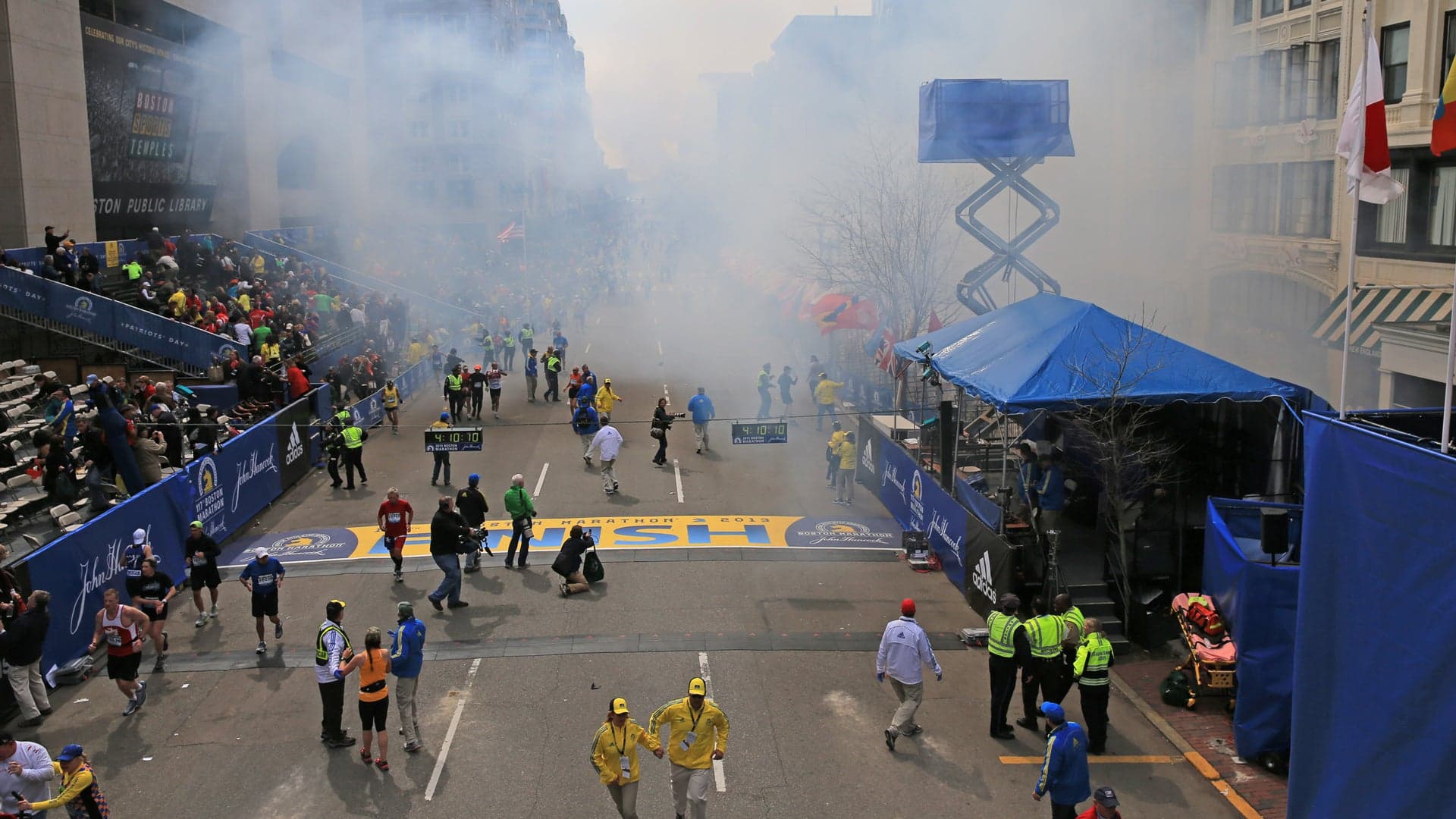On April 15, 2013, two bombs go off near the finish line of the Boston Marathon, killing three spectators and wounding more than 260 other people in attendance. Four days later, after an intense manhunt that shut down the Boston area, police captured one of the bombing suspects, 19-year-old Dzhokhar Tsarnaev; his older brother and fellow suspect, 26-year-old Tamerlan Tsarnaev, died following a shootout with law enforcement earlier that same day.
The 117th Boston Marathon began in the morning from Hopkinton, Massachusetts, with some 23,000 participants. At around 2:49 that afternoon, with more than 5,700 runners still in the race, two pressure cooker bombs hidden in backpacks exploded within seconds of each other near the finish line along Boylston Street. Three people died: a 23-year-old woman, a 29-year-old woman and an 8-year-old boy. Among the scores of others who were injured, more than a dozen people required amputations.
On the evening of April 18, the FBI released photos of two male suspects sought in connection with the bombings. That night at around 10:30, Sean Collier, a 26-year-old police officer at the Massachusetts Institute of Technology, was shot dead in his patrol car on the school’s Cambridge campus. Authorities would eventually link the murder to the Tsarnaev brothers, who spent parts of their childhoods in the former Soviet republic of Kyrgyzstan but had lived in the United States for about a decade prior to the bombings. Soon after Officer Collier was killed, Tamerlan Tsarnaev carjacked an SUV, taking the driver hostage and telling him he was one of the Boston Marathon bombers.
Dzhokhar Tsarnaev followed behind in a smaller car before joining his older brother and the hostage in the SUV. The brothers drove around the Boston area with their hostage, forcing him to withdraw money from an ATM and discussing driving to New York City. When they stopped at a Cambridge gas station, the hostage escaped and called police, informing them the SUV could be tracked by his cellphone, which was still in the vehicle. Shortly after midnight, a gun battle broke out between the Tsarnaevs and police on a street in the Boston suburb of Watertown. One officer was seriously injured by gunfire but survived. Tamerlan Tsarnaev, also seriously wounded, was taken to a hospital, where doctors tried unsuccessfully to resuscitate him. Dzhokhar Tsarnaev managed to drive away from the shootout in the stolen SUV before abandoning it nearby and fleeing on foot.
That day, April 19, the Boston area was on lockdown, with schools closed, public transportation service suspended and people advised to stay inside their homes, as police conducted door-to-door searches in Watertown and military-style vehicles patrolled the streets. That evening, after police called off their search of the area, a Watertown man went outside to check on a boat he was storing in his backyard. When he looked inside the 24-foot vessel, he was startled to see blood and a person, who turned out to be Dzhokhar Tsarnaev, hiding there. Police soon arrived and took the suspect, who was wounded from the earlier gun battle, into custody.
At the time of the bombings, Dzhokhar Tsarnaev was a sophomore at the University of Massachusetts at Dartmouth, while Tamerlan Tsarnaev was a community college dropout and former amateur boxer with a wife and child. Investigators believe the Tsarnaevs were motivated by extremist Islamic beliefs but planned and carried out the bombings on their own and were not connected to any terrorist organizations. The brothers allegedly used the Internet to learn how to build explosives.
In July 2013, Dzhokhar Tsarnaev pleaded not guilty to the 30 federal charges against him, including the use of a weapon of mass destruction. He went on trial in January 2015, and was found guilty on all 30 counts. He was sentenced to death but appealed the decision. Tsarnaev is currently being held at a supermax prison in Colorado.
